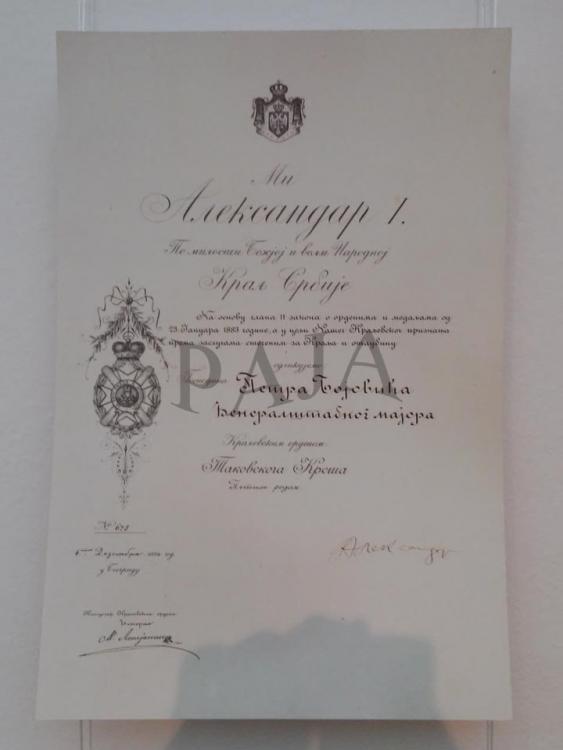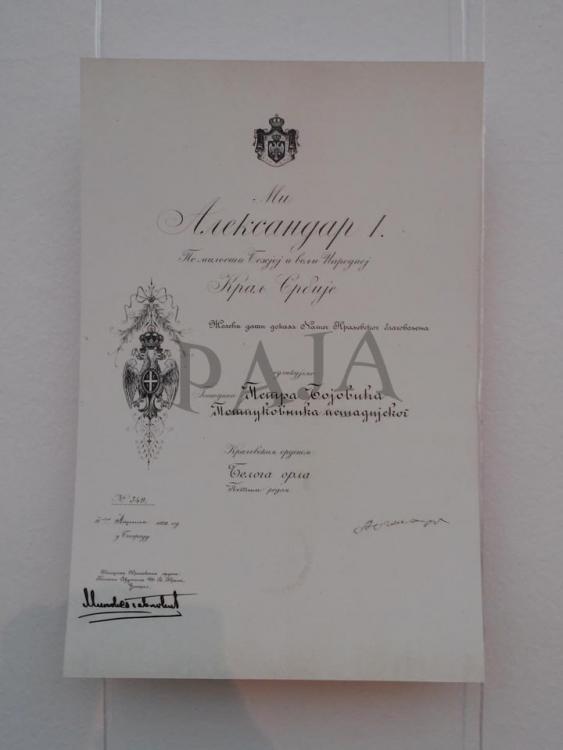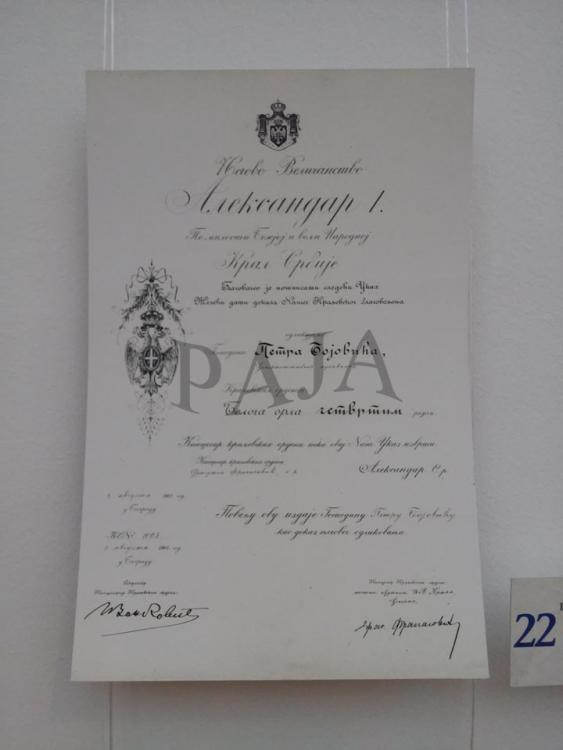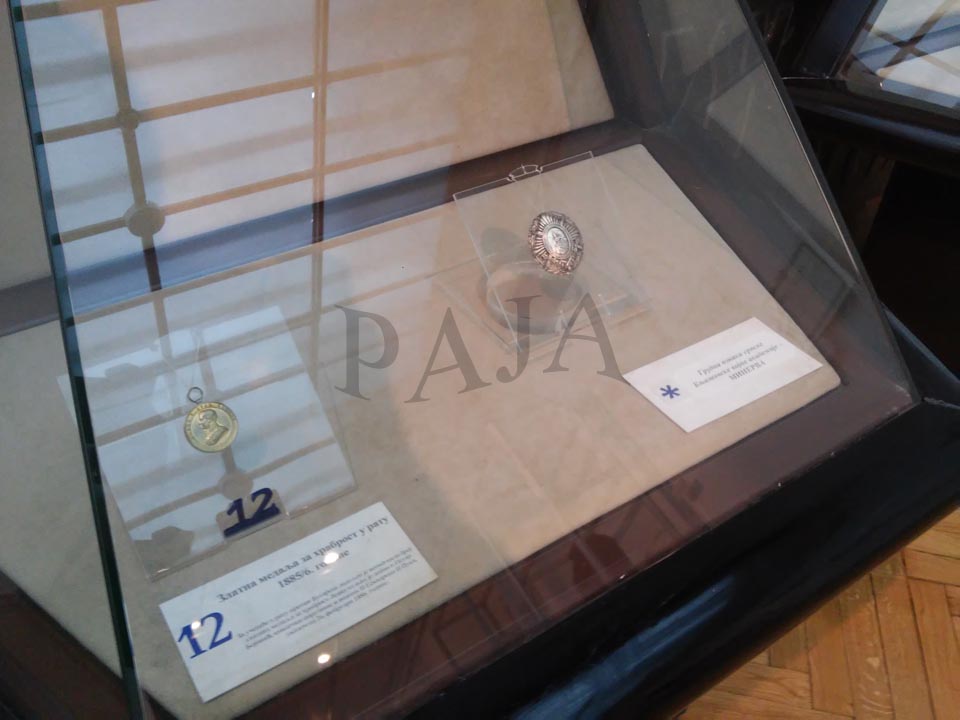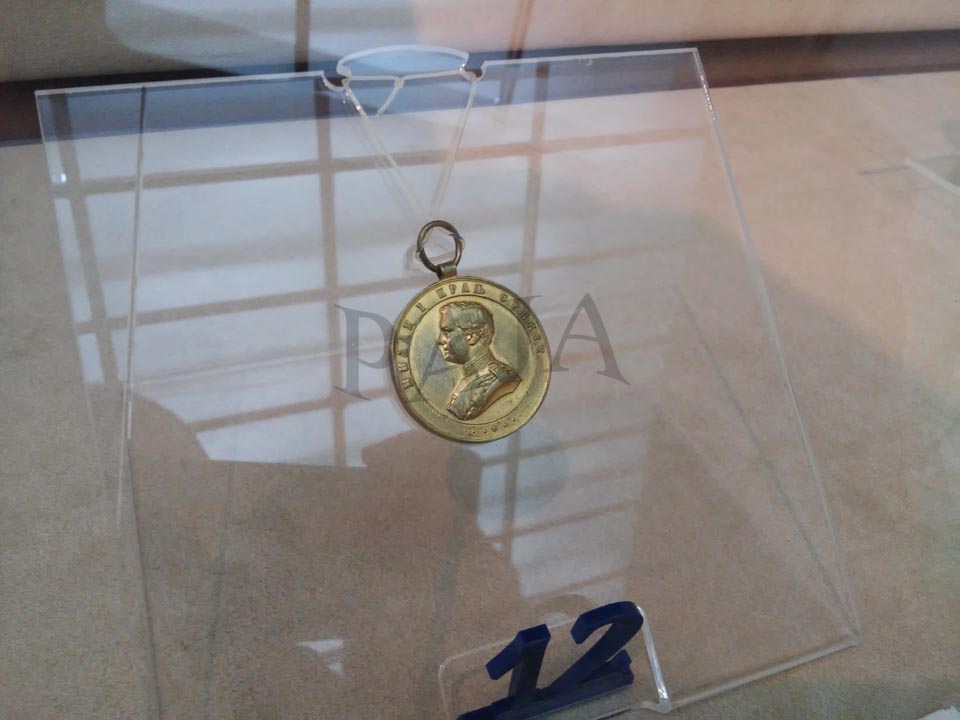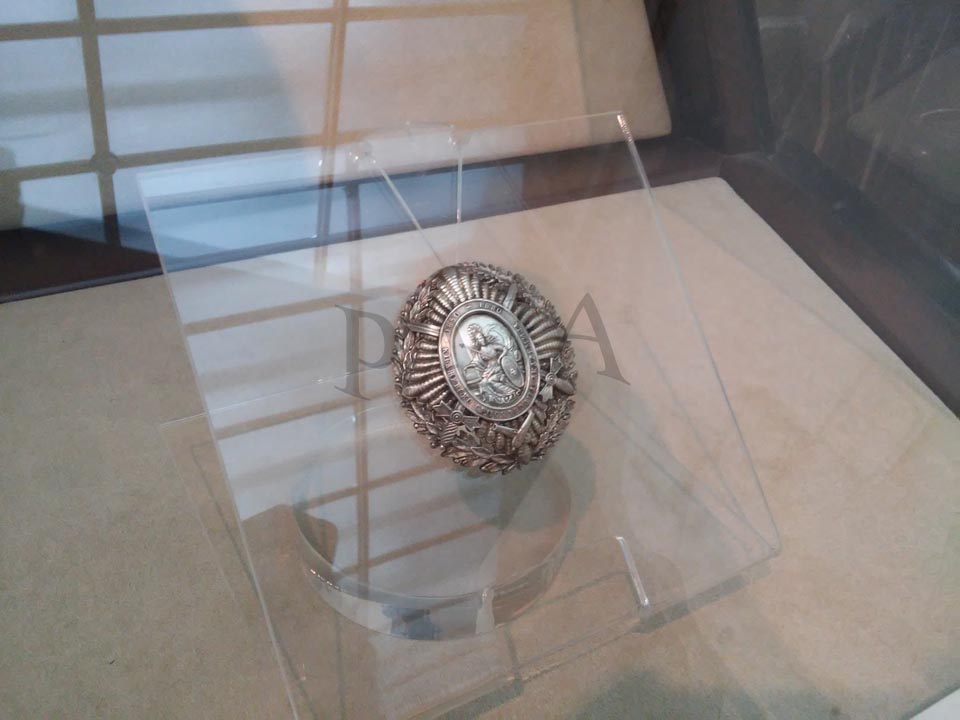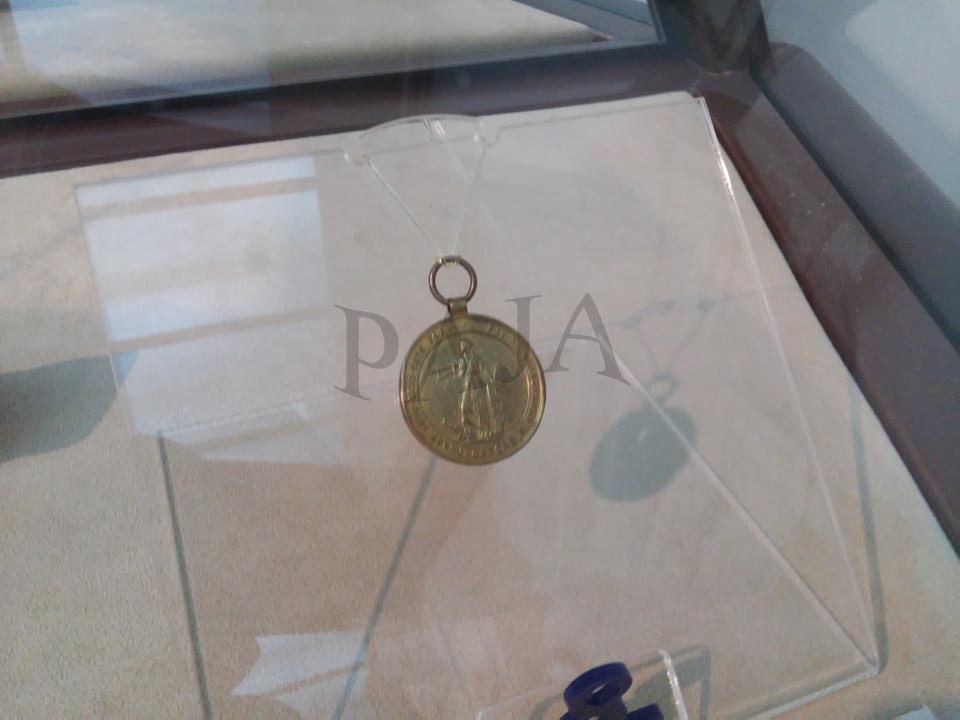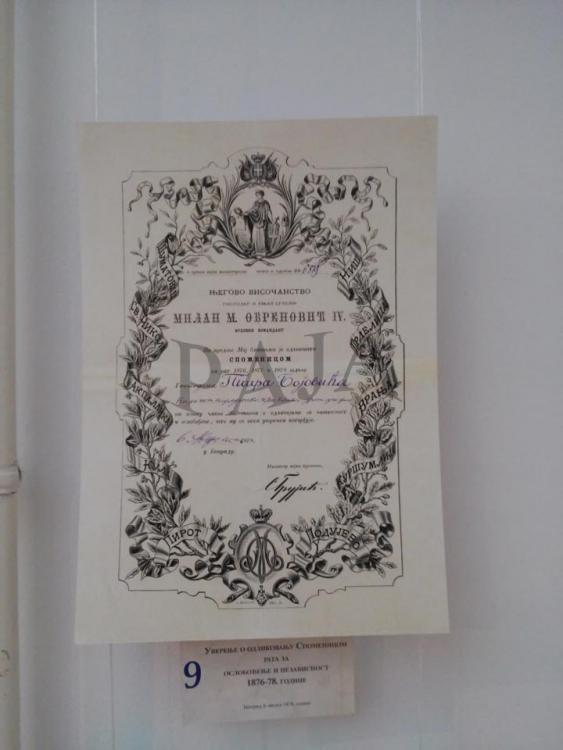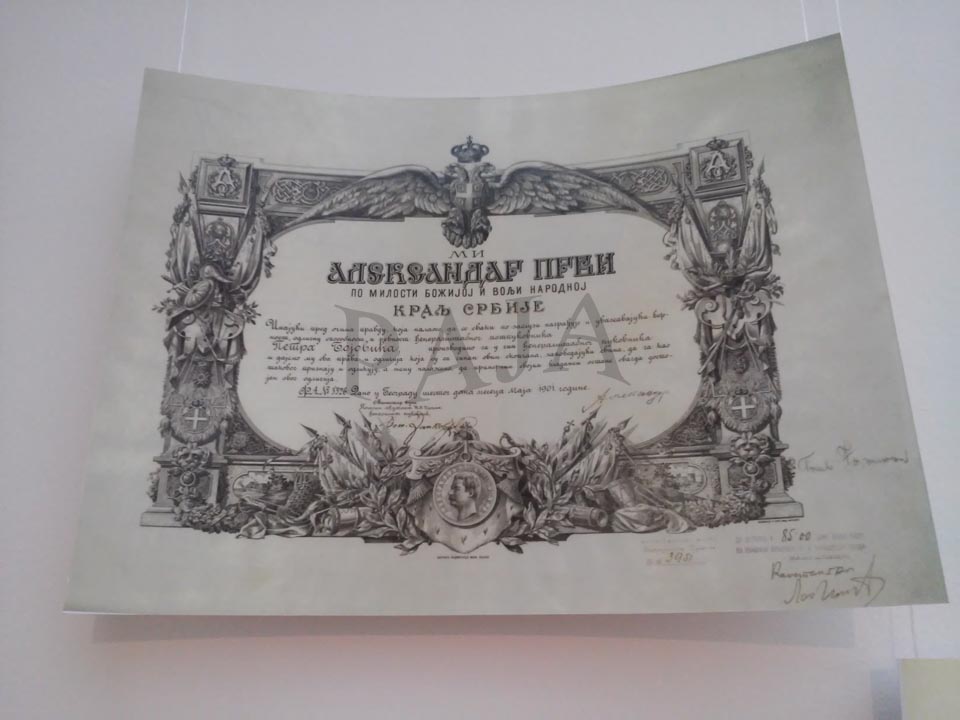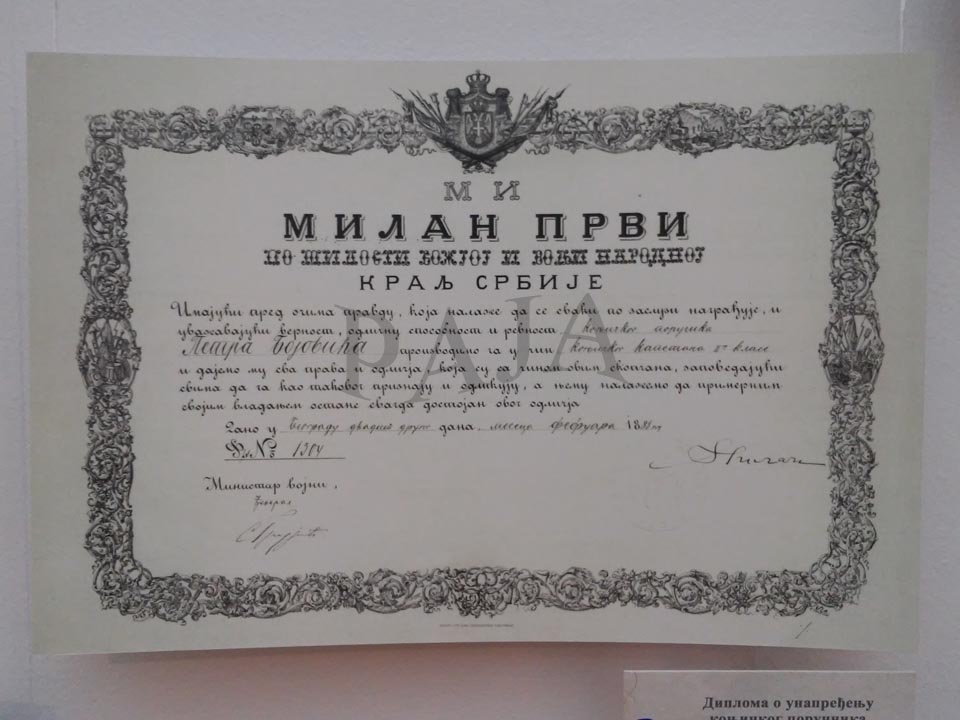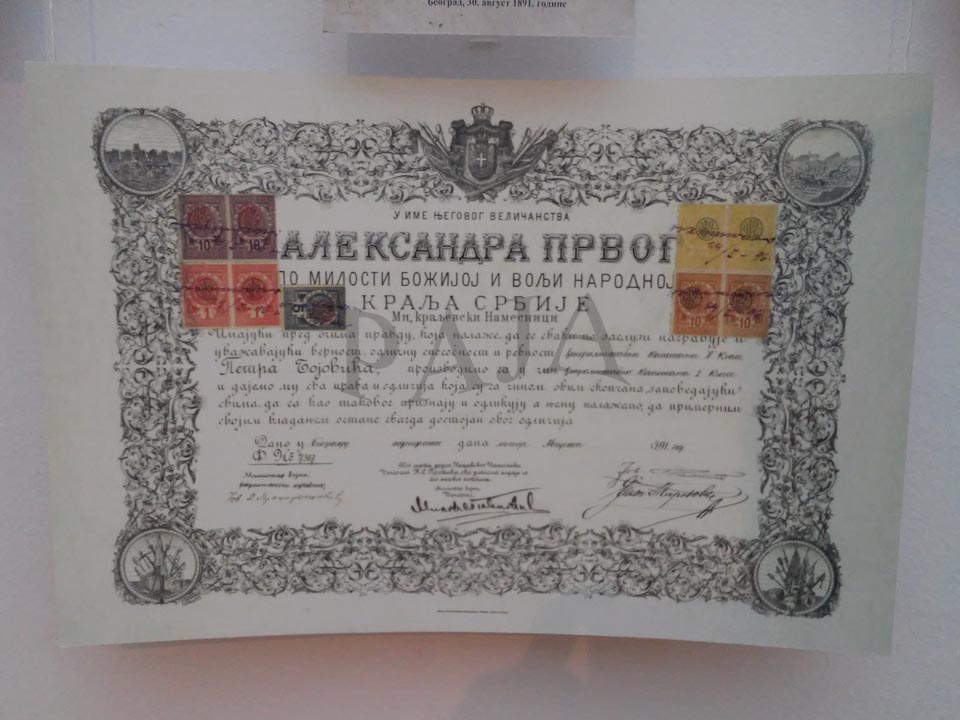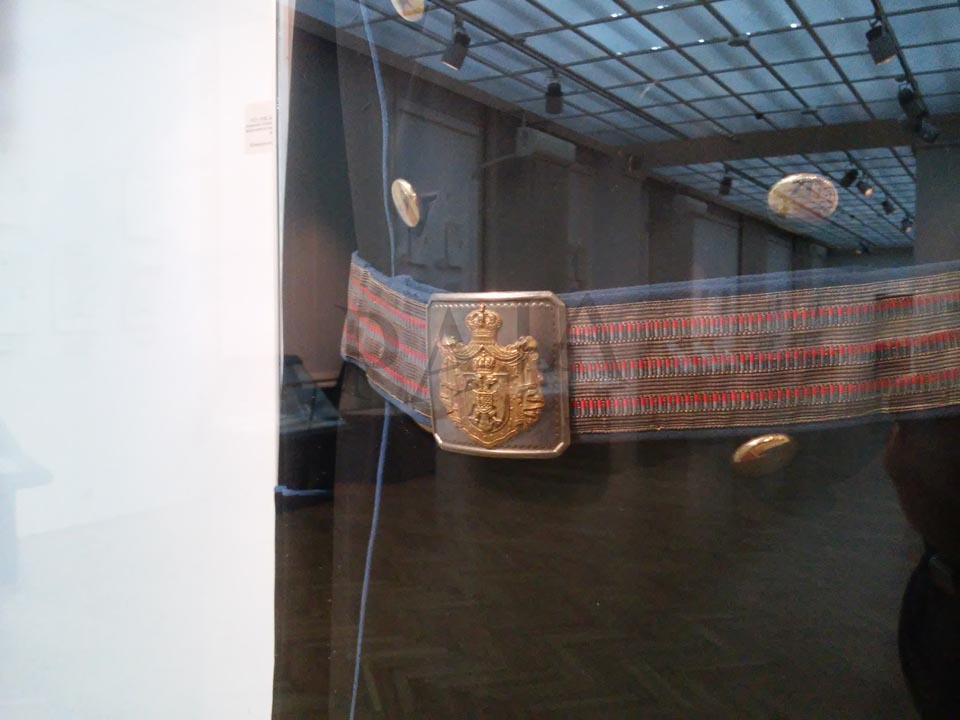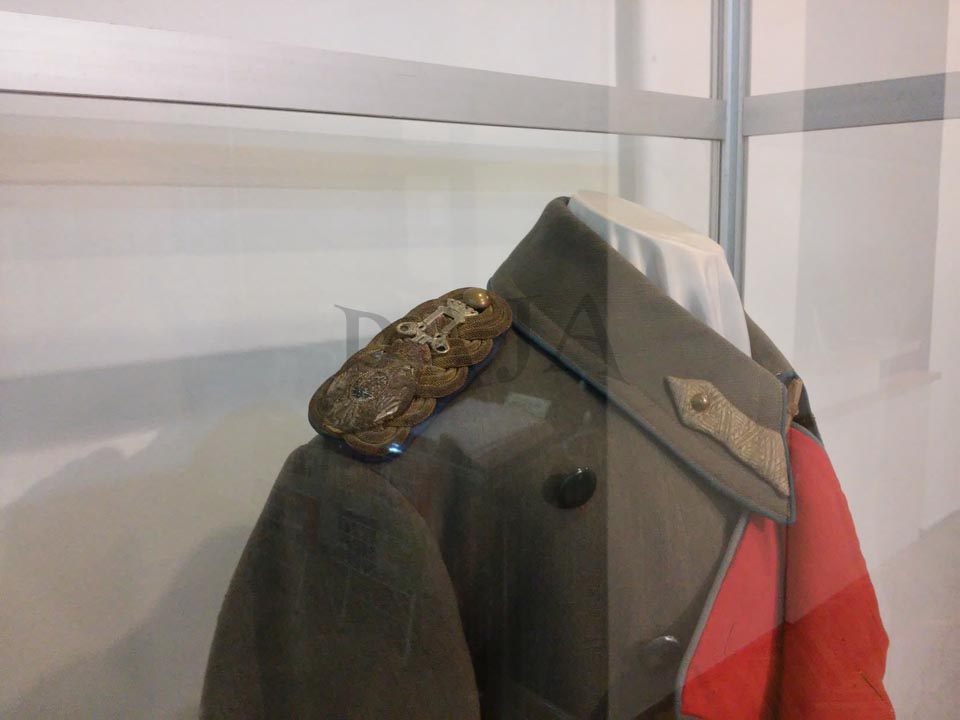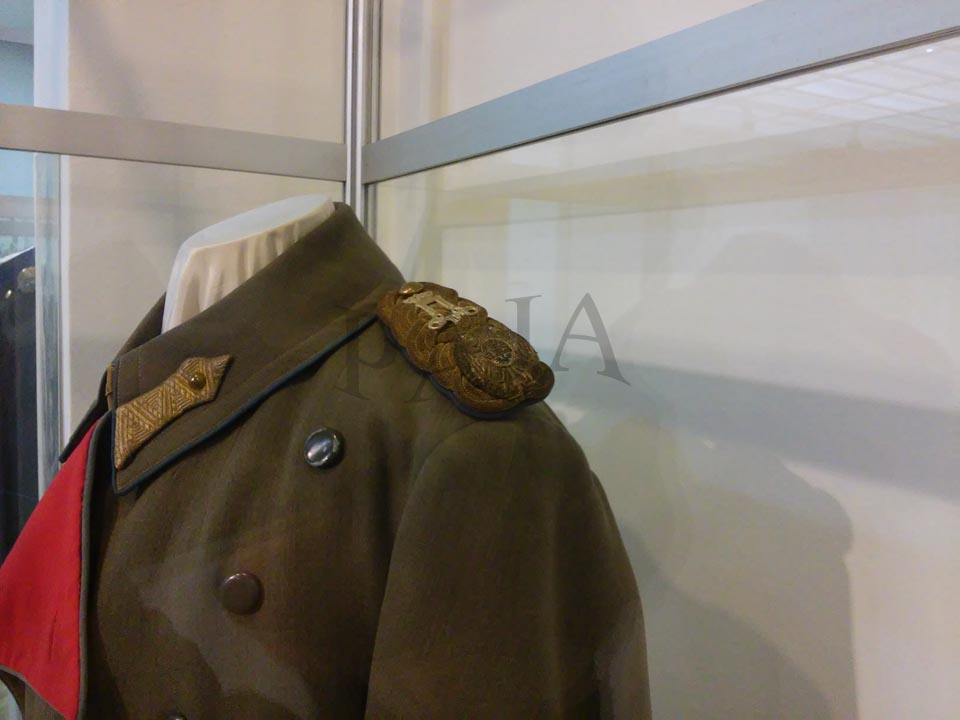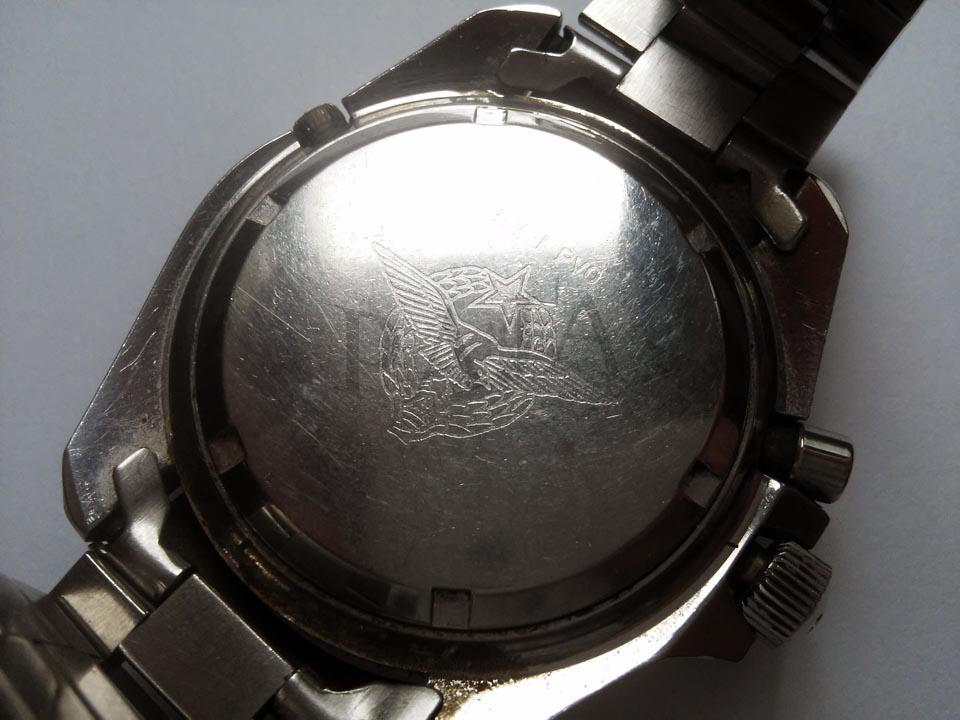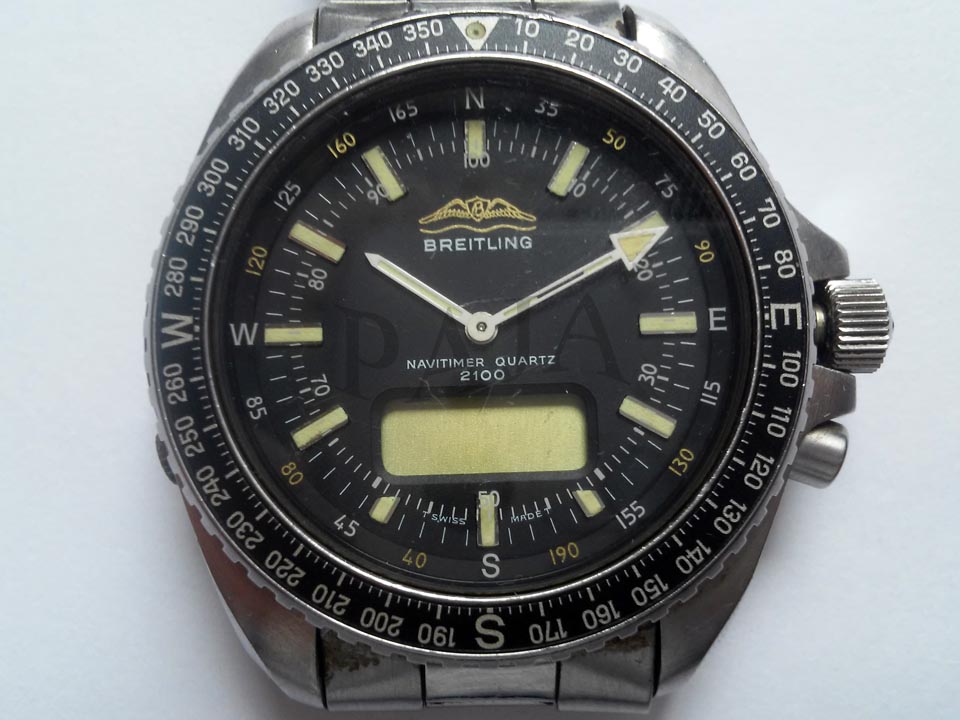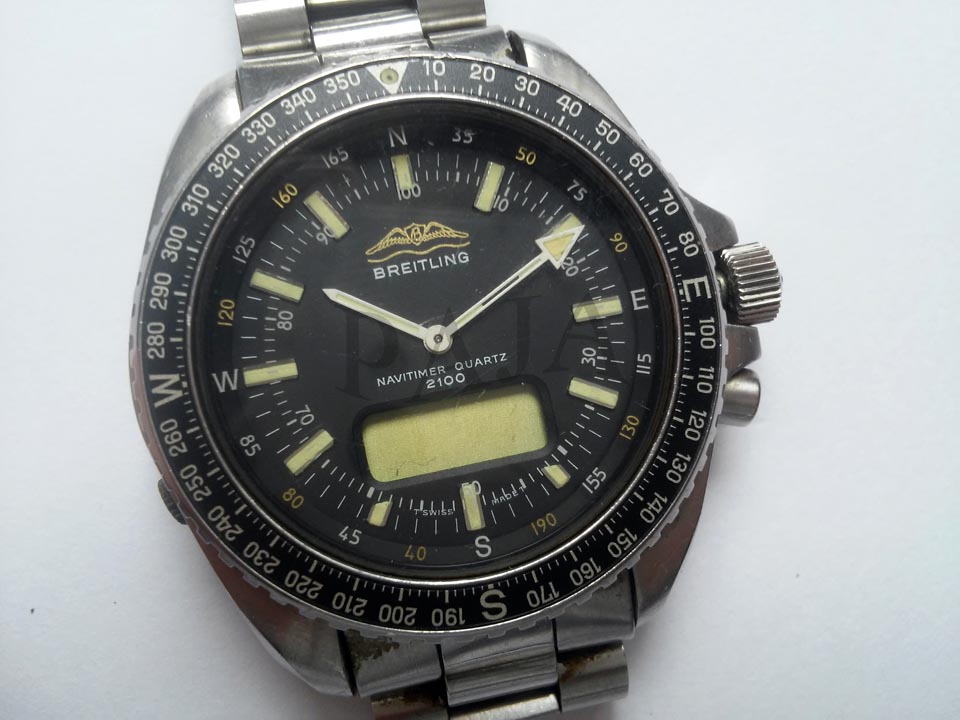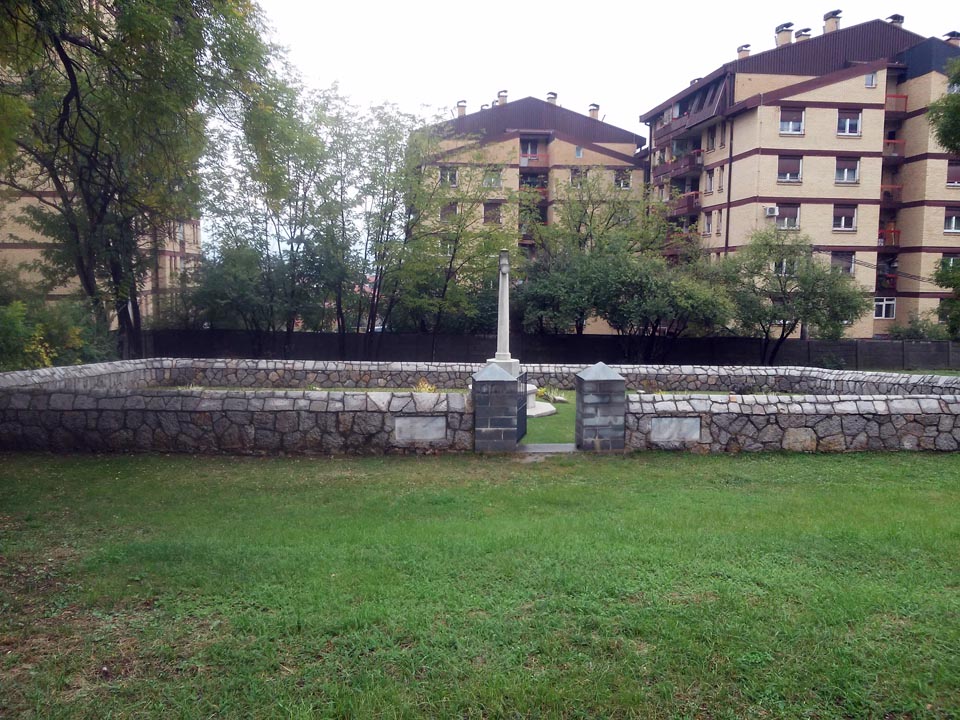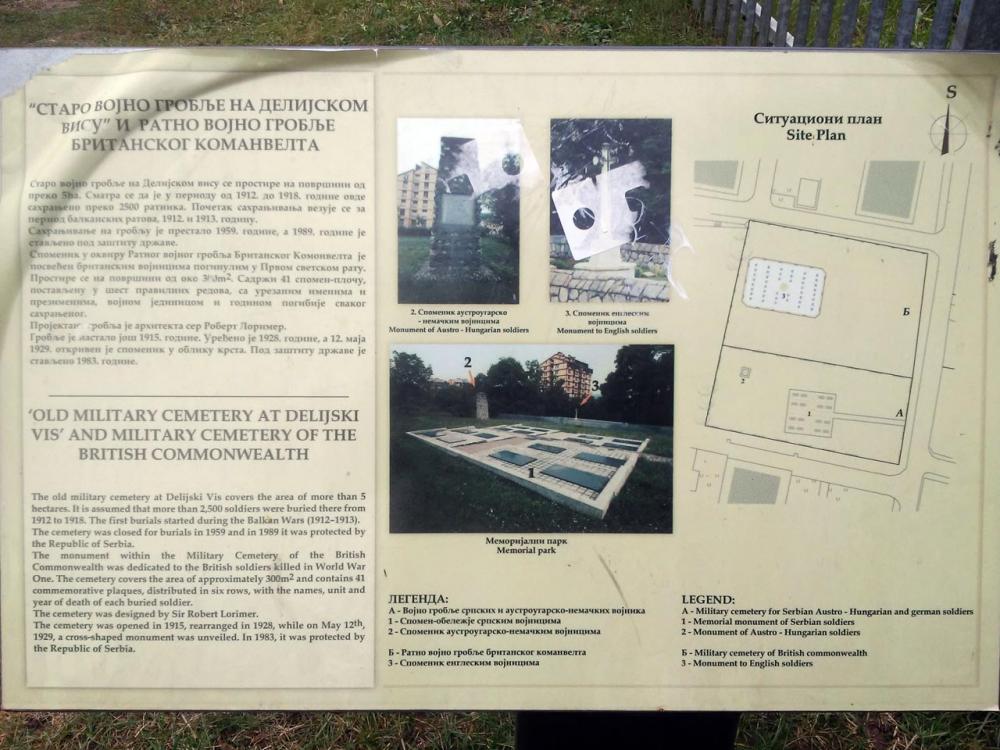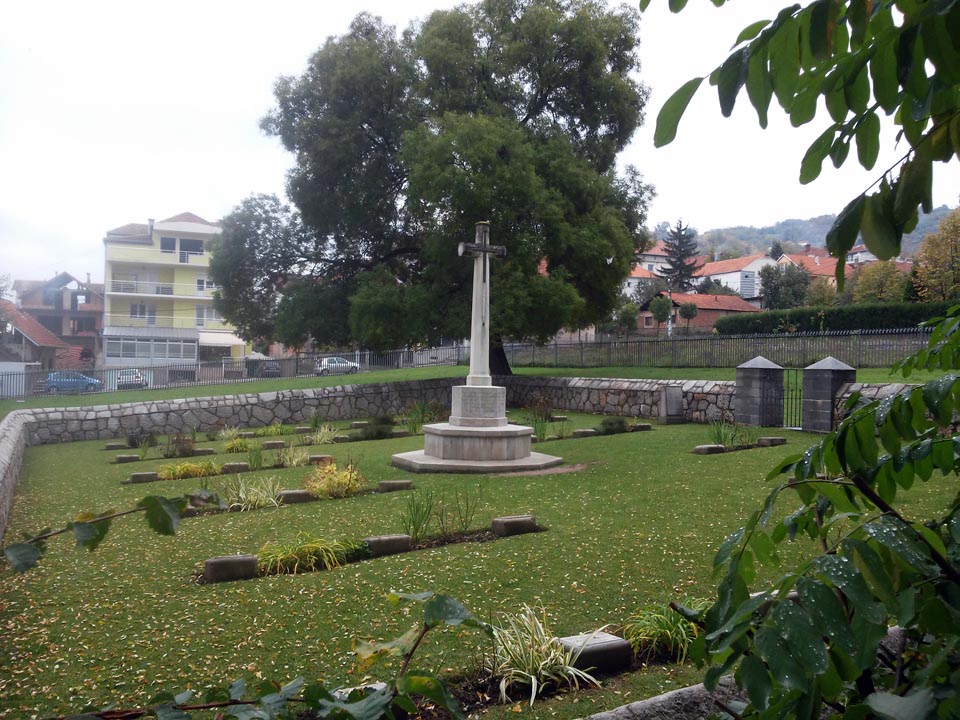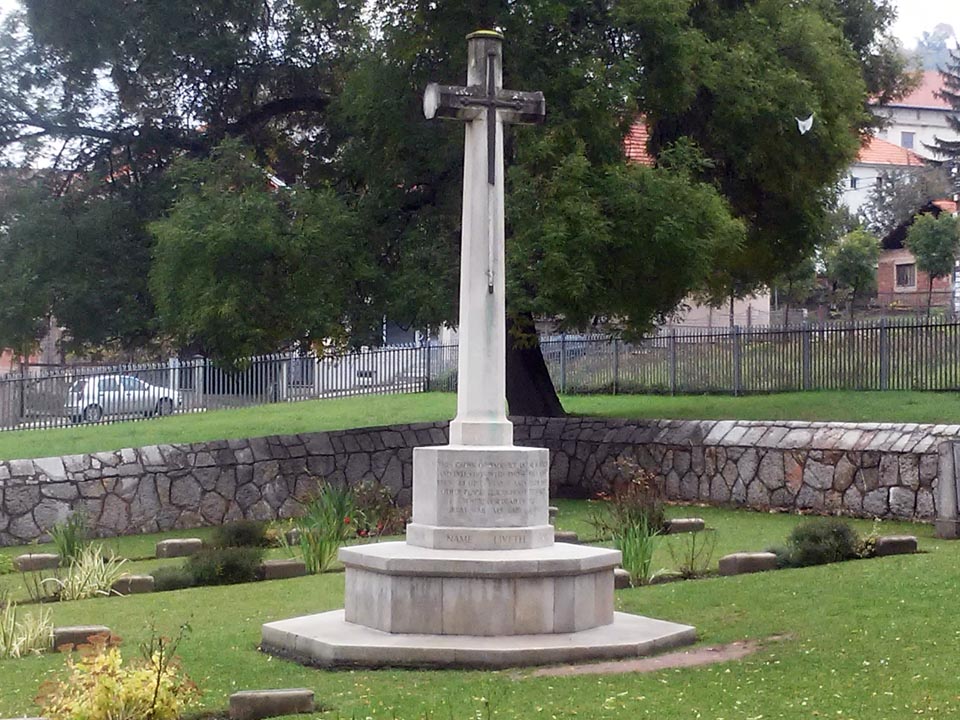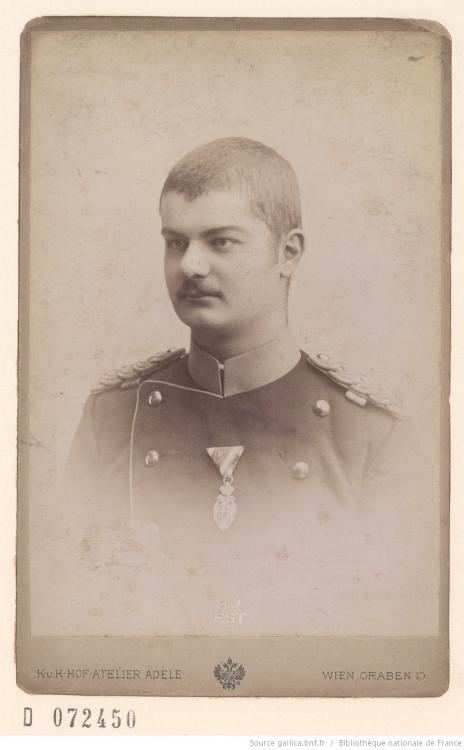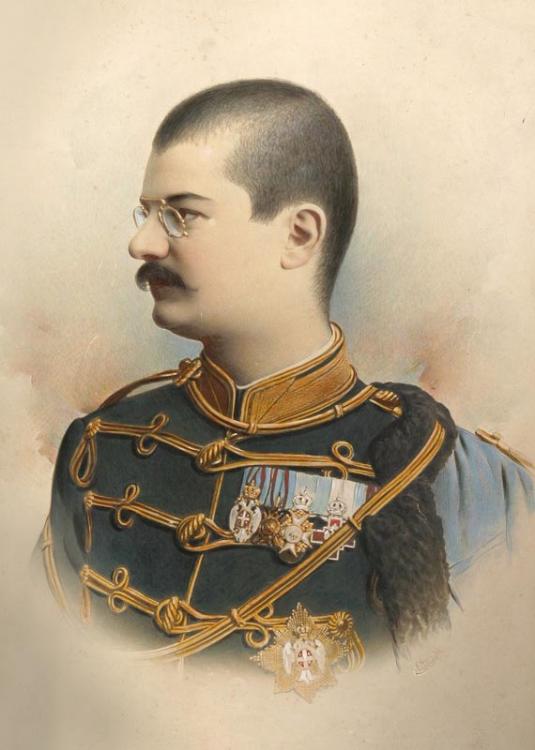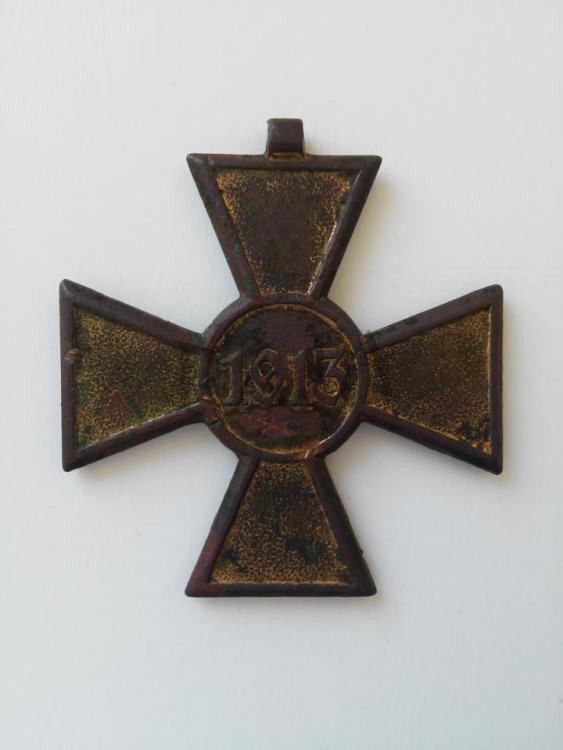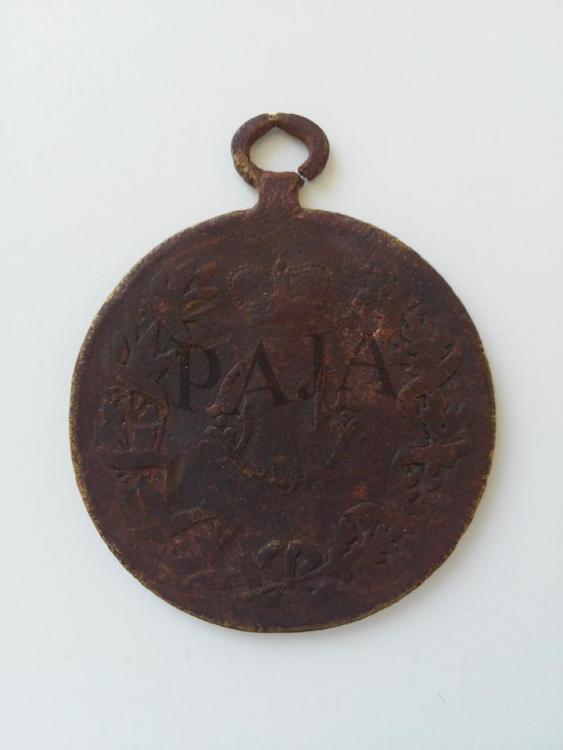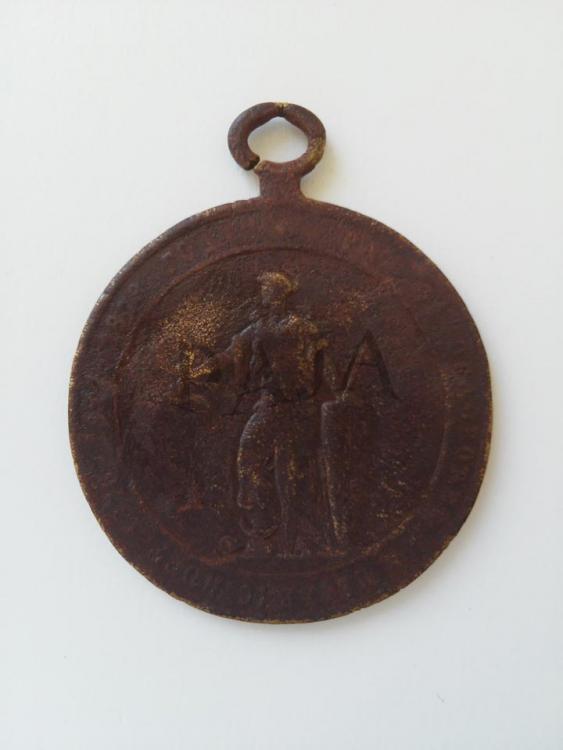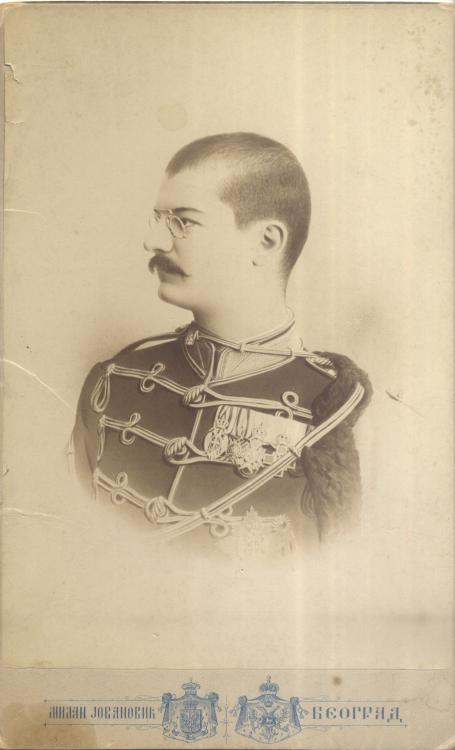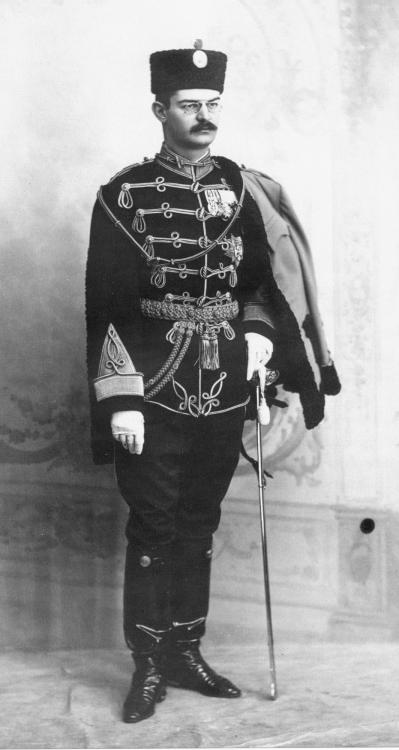-
Posts
3,629 -
Joined
-
Last visited
-
Days Won
1
Content Type
Profiles
Forums
Blogs
Gallery
Events
Store
Everything posted by paja
-
Serbia Decorations from the collections of the Serbian museums
paja replied to paja's topic in Southern European & Balkan States
Order of the Cross of Takovo 3rd Class (Fleischhacker), 1900 Order of St. Sava 3rd Class (Scheid), 1900 -
Serbia Decorations from the collections of the Serbian museums
paja replied to paja's topic in Southern European & Balkan States
40 Years of St. Andrew's Assembly Commemorative Medal 60 Years of the King's Guards Commemorative Medal -
Serbia Decorations from the collections of the Serbian museums
paja replied to paja's topic in Southern European & Balkan States
Awarding documents for the missing decorations: Order of the Cross of Takovo 5th class, 1894 Order of the Cross of Takovo 4th class, 1896 Order of the White Eagle 5th class, 1889 Order of the White Eagle 4th class, 1902 -
Serbia Decorations from the collections of the Serbian museums
paja replied to paja's topic in Southern European & Balkan States
Golden Bravery Medal from 1885-86 - the rarest Serbian Bravery Medal! "Academy Badge", 1st type, so-called "Minerva", unfortunately coat of arms which should be above the central medallion is missing. Many of these badges have missing coat of arms or the crossed cannons. -
Serbia Decorations from the collections of the Serbian museums
paja replied to paja's topic in Southern European & Balkan States
Commemorative Medal of the Wars of 1876-1878 and awarding document Commemorative Cross of the War of 1885-86 and awarding document -
Serbia Decorations from the collections of the Serbian museums
paja replied to paja's topic in Southern European & Balkan States
-
Serbia Decorations from the collections of the Serbian museums
paja replied to paja's topic in Southern European & Balkan States
-
Serbia Decorations from the collections of the Serbian museums
paja replied to paja's topic in Southern European & Balkan States
Promotions: Artillery 2nd Lieutenant, 1880 Cavalry 1st Lieutenant, 1883 Cavalry Captain 2nd Class, 1888 General Staff Captain 1st Class, 1891 -
Serbia Decorations from the collections of the Serbian museums
paja replied to paja's topic in Southern European & Balkan States
-
Serbia Decorations from the collections of the Serbian museums
paja replied to paja's topic in Southern European & Balkan States
I finally visited the exhibition about vojvoda Bojović and I must say that I'm very impressed. I presumed there would be more visitors in the first days after opening so I waited a while. I was practically alone today so I took my time and made hundreds of photos. I'll slowly post those which I consider the best. Entrance is of course free and visitors can buy a very nice and comprehensive catalog for around 4 euros (500 RSD). I bought a copy for myself and I'm very pleased with it. Vojvoda's overcoat -
WW1 Military Cemetery, Niš, Serbia
paja replied to paja's topic in Great Britain: Research, Documentation & History
As Niš is not my hometown and I don't travel there often I also was not aware of that military cemetery. Some years back I read an article about it and decided to visit it next time I go to Southern Serbia. Apart from that one there's also WW2 military cemetery in Belgrade, it's larger and more people know about it. When the road takes me to that neighborhood I'll try making a few photos. By the way, military cemetery in Niš is called Chela Kula (Skull Tower, in Serbian "Ћеле кула") on GWGC website. The Tower is very close to the cemetery hence the name. For those who plan to go to Niš in the future I strongly recommend visiting it. I think such a structure doesn't exist anywhere else in the Europe or even the world, at least I'm not aware of it. The tower was built in 1809 out of 952 skulls of the Serbian revolutionaries who were killed in the Battle of Čegar during First Serbian Uprising against the Ottoman Empire. I'll probably open a separate topic about it on GMIC, until then everyone interested can read more about it here (Wikipedia). -
yugoslavia Yugoslav Air Force Breitling Navitimer 2100
paja replied to paja's topic in Southern European & Balkan States
-
Information found here (German War Graves Commission website). Das in Belgrad befindliche Mackensen-Denkmal ist renovierungsbedürftig und wurde daher mit einem Stahlgitter verkleidet. Leider mussten wir bei einem letzten Besuch im März 2016 feststellen, dass die von uns angebrachten Metalltafeln mit Namen gefallener deutscher Soldaten des Zweiten Weltkrieges gestohlen wurden. Über einen Ersatz der Tafel wird erst im Zusammenhang mit der Renovierung des Denkmals entschieden. Die Renovierung des Denkmals kann zurzeit nicht durchgeführt werden, da die serbische Seite die hierfür notwendigen Finanzmittel momentan nicht zur Verfügung stellen kann. Im Park Kosutnjak im Südwesten Belgrads liegt die deutsche Kriegsgräberstätte BANOVO BRDO, die als deutscher Soldatenfriedhof des Ersten Weltkrieges errichtet und im Zweiten Weltkrieg durch umfangreiche Zubettungen stark erweitert wurde. Nach Abschluss eines Kriegsgräberabkommens ist der Ausbau dieser heute leider weitgehend verfallenen Gräberstätte zu einem zentralen Sammelfriedhof für deutsche Kriegstote in Serbien vorgesehen. Zur Entstehung der Gräberstätte im Ersten Weltkrieg Nach zwei Niederlagen der österreichisch-ungarischen Armee im August und Dezember 1914 im Feldzug gegen Serbien wurde im Oktober 1915 – auf Wunsch Bulgariens, das im September 1915 als neuer Verbündeter gewonnen werden konnte, unter deutschem Oberbefehl ein dritter Versuch unternommen, Serbien niederzuwerfen. Generalfeldmarschall August von Mackensen (+ November 1945) übernahm die Heeresgruppe und beendete den Feldzug gegen Serbien erfolgreich. Hauptschauplatz der Kämpfe waren die südwestlich von Belgrad gelegenen Höhen, die von den serbischen Truppen erbittert verteidigt wurden. Der Banovo – Berg bildete dabei eine strategische Schlüsselposition. Nach der Einnahme Belgrads begann man sogleich mit der Errichtung eines "Deutschen Heldenfriedhofes" auf dem Banovo Brdo. Da Belegungsverzeichnisse nicht mehr vorhanden sind - sie sollen "nach Schlesien geschleppt und dort verloren gegangen sein" – kann die Anzahl der dort Bestatteten nur geschätzt werden. Rund 2600 Gefallene des Ersten Weltkrieges, darunter auch 30 serbische Kriegstote, sowie einige britische und französische Kanoniere, die später auf eigene Soldatenfriedhöfe überführt wurden, sollen hier ihre letzte Ruhestätte gefunden haben. Die Gestaltung des Friedhofes Der Waldfriedhof auf dem Banovoberg erhielt seine Prägung durch eine gärtnerische Gestaltung mit Erhaltung des Baumbestandes, Strukturierung der Gräberfelder mit Einzel- und Kameradengräbern durch Plattenwege, und insbesondere die im Zusammenhang mit dem Bau des Friedhofes geschaffene einzigartige Denkmalsituation. Ein interessantes Detail bildet darüber hinaus die zu Ehren von Kaiser Wilhelm II. anlässlich seines Aufenthaltes in Belgrad im Jahre 1916 errichtete sogenannte "Mackensen – Bank", eine halbmondartige Betonbank am Rande des Friedhofes mit Ausblick zur Save, dem damaligen Grenzfluss zwischen dem Königreich Serbien und dem österreichischen Kaiser- und Königreich. Das über eine breite Treppe erreichbare Hauptdenkmal der Anlage besteht aus einem im klassizistischen Stil gehaltenen und von einem Marmorsarkophag gekrönten Mahnmal. Es trägt die Inschrift "Das Preußische Reserve – Infanterieregiment 208 seinen gefallenen Helden". Eine schlichte Steinpyramide mit der Inschrift "Seinen treuen Kameraden – das 22. Reservekorps", befindet sich in einigem Abstand zum Hauptdenkmal. Zwischen diesen beiden Baulichkeiten wurde auf Befehl des Kommandanten von Mackensen noch ein drittes Denkmal - in Form eines schlichten kubischen Steines mit einem Kreuz versehen - errichtet. Es trägt in deutscher und serbischer Sprache die Inschrift: "Hier ruhen serbische Helden". Eine Erläuterung zu der Entstehung dieses besonderen Males findet der Besucher heute auf einer Granittafel vor dem Gedenkstein, auf dem in serbischer Sprache die Worte "Denkmal für die serbischen Krieger, die den Heldentod gefunden haben, als sie im Herbst 1915 Belgrad verteidigten. Dieses Denkmal wurde ?als ein Zeichen der Ehrerbietung vor den Kriegsgegnern errichtet" zu lesen sind. Erweiterung des Friedhofes im Zweiten Weltkrieg Im Zweiten Weltkrieg wurde der Soldatenfriedhof durch Anlegung neuer Parzellen um das Zweifache der alten Fläche vergrößert. Von 1941 bis 1944 bestattete die Wehrmacht laut Aussage des Friedhofsverwalters Eller, der bis zum Jahre 1944 dort tätig war, weitere schätzungsweise bis zu 2000 deutsche Soldaten auf dem nun ca. 200 x 250m großen Gelände. Ab dem Herbst 1944 änderte sich die Situation grundlegend; der Friedhof wurde zunehmend zurückgebaut. Ende des Jahres 1945 betteten die jugoslawischen Behörden die 30 serbischen Kriegstoten aus dem Ersten Weltkrieg aus einer kleineren Parzelle in der Mitte des nun nicht mehr gelittenen deutschen Friedhofes aus und überführten die Gebeine auf den städtischen Friedhof "Novo Groblje" zur Wiederbestattung in der "Gruft der Verteidiger Belgrads". Bemühungen des Volksbundes um den Erhalt der Gräberstätte Mitte der Achtziger Jahre gelang es dem Volksbund schließlich, die jugoslawische Regierung auf die Missstände, insbesondere im Hinblick auf den Zustand der Denkmäler des nun nicht mehr als Friedhof erkennbaren Geländes aufmerksam zu machen und dort auch Gehör zu finden. So konnte im Jahre 1988 tatsächlich eine Sanierung des Mahnmals des Preußischen Reserve – Infanterieregimentes 208 durch das Amt für Denkmalschutz der Stadt Belgrad erfolgen. Zugleich durften dort – auf Kosten des Volksbundes - für die 947 namentlich bekannten deutschen Gefallenen oder in Kriegsgefangenschaft Verstorbenen Bronzetafeln am Hauptdenkmal angebracht werden.
-
WW1 Military Cemetery, Niš, Serbia
paja replied to paja's topic in Great Britain: Research, Documentation & History
Information found here (GWGC) CHELA KULA MILITARY CEMETERY, NIS Historical Information Nis, the ancient capital of Serbia, was the seat of the Serbian Government from the 25th July 1914, until November, 1915, and from November 1915, to October 1918 it was in Bulgarian hands. On the east side of the town, four miles from the railway station, is the Chela Kula Military Hospital (the name refers to the "tower of skulls" made by the Turks in 1809) and the great Military Cemetery which contains French, Austrian, Hungarian and Bulgarian plots, besides Serbian graves. The British plot, in the South-West part, is enclosed by a low granite wall. The British plot contains the graves of 26 soldiers from the United Kingdom, seven Red Cross nurses, three sailors of the Royal Navy and three unidentified Marines. Of the 26 soldiers, 25 belonged to the R.A.S.C. (M.T.) and died of influenza after the Armistice with Bulgaria. Of the nurses, five belonged to the Scottish Women's Hospital. Two special memorials record the names of a sailor and a Marine, buried at Belgrade in 1915, whose graves could not be found. Thirty-eight of the British graves were brought in from BELGRADE (NOVO GROBLJE) CEMETERY, NISH BRITISH CEMETERY, VRANJE BRITISH CEMETERY and other burial grounds. -
yugoslavia Yugoslav Air Force Breitling Navitimer 2100
paja replied to paja's topic in Southern European & Balkan States
-
WW1 Military Cemetery, Niš, Serbia
paja replied to paja's topic in Great Britain: Research, Documentation & History
OLD MILITARY CEMETERY AT DELIJSKI VIS AND MILITARY CEMETERY OF THE BRITISH COMMONWEALTH The old military cemetery at Delijski Vis covers the area of more than 5 hectares. It is assumed that more than 2,500 soldiers were buried there from 1912 to 1918. The first burials started during the Balkan Wars (1912-1913). The cemetery was closed for burials in 1959 and in 1989 it was protected by the Republic of Serbia. The monument within the Military Cemetery of the British Commonwealth was dedicated to the British soldiers killed in World War One. The cemetery covers the area of approximately 300m2 and contains 41 commemorative plaques, distributed in six rows, with the names, unit and year of death of each buried soldier. The cemetery was designed by Sir Robert Lorimer. The cemetery was opened in 1915, rearranged in 1928, while on May 12th, 1929, a cross-shaped monument was unveiled. In 1983, it was protected by the Republic of Serbia. -
WW1 Military Cemetery, Niš, Serbia
paja replied to paja's topic in Great Britain: Research, Documentation & History
-
I've spent the weekend in Niš so I seized the opportunity to visit British WW1 Military Cemetery in the part of town called "Delijski Vis" (Делијски вис). It's located at the corner of the Francuska and Milunka Savić streets, surrounded by a wall and a fence and secured with a combination padlock. Unfortunately I didn't know the code at the time, even though finding it later took about 5 minutes, so I made couple of photos from the outside. Right next to it used to be a Serbian Military Cemetery on which some 2500 soldiers from the Wars of 1912-1918 were buried. There are some contradictory information online but I think around 1700-1800 earthly remains (including some from WW2) were exhumed in 1989 and placed into 16 collective tombs. Unfortunately vast majority of the fallen soldiers remained unknown. The lot on which these collective tombs are placed used to be German WW1 and WW2 Military Cemetery which was relocated to Belgrade in 1942 (separate topic about it can be found here). Look from the entrance gate in Francuska Street (Француска улица).
-
Yugoslavia Yugoslavian Partisan Stars
paja replied to Bryan's topic in Southern European & Balkan States
It's easy to miss it in a topic with over 250 replies But still, like I said earlier, the order that you have showed us has different needle. Rudež mentions in his book that both Soviet and Yugoslav type were later converted although I don't remember seeing Yugo type with needle. -
serbia Decorations of King Aleksandar Obrenović
paja replied to paja's topic in Southern European & Balkan States
Dear Dragomir, Thank you for shedding more light on this matter. I followed a discussion about that medal bar elsewhere and some say it also surfaced around 15 years ago when a certain (Croatian?) collector from London tried to sell it on his own. -
Yugoslavia Yugoslavian Partisan Stars
paja replied to Bryan's topic in Southern European & Balkan States
I've seen converted types before but not with that type of needle. You can see at least one more example in this topic here. Based on the type of needle I'd say they were both converted in IKOM. -
serbia Decorations of King Aleksandar Obrenović
paja replied to paja's topic in Southern European & Balkan States
-
serbia Decorations of King Aleksandar Obrenović
paja replied to paja's topic in Southern European & Balkan States
-
Serbian Commemorative Cross 1913 for Balkan Wars
paja replied to Egorka's topic in Southern European & Balkan States
Talking about buried medals here are two from my late grandfather's house. I have no idea where did he find them, he liked shinny things A long time ago he gave me a silver Ottoman coin from the XVIII century he found near a medieval fortress. -
serbia Decorations of King Aleksandar Obrenović
paja replied to paja's topic in Southern European & Balkan States






